Fir is one of the most beautiful and fragrant coniferous species, and it can often be found in parks and gardens. The most common uses of this plant in landscape design are creating a live hedge, individual and group compositions, as well as alley decoration. This coniferous beauty is very popular among gardeners due to its soft and delicate needle-like leaves and equally delicate greenery. Fir is unpretentious and does not require any special conditions for its cultivation.
Coniferous trees are one of the most popular and ideal objects for landscaping your yard. Moreover, their presence near your home brings enormous benefits – they kill all nearby microbes and purify the air. Unlike our usual pine and spruce trees, fir is more slender and lush. It’s no wonder it’s called the queen of conifers. Planting fir near your home means giving your yard elegance and beauty all year round. Moreover, the process of growing this beautiful tree will not cause you any difficulties.
The plant also blends well with other trees, such as fir, pine, larch, and other shrubs. The most attractive combination for the fir is with birch, as well as with the purple-leaved Japanese barberry or red-leaved maple.
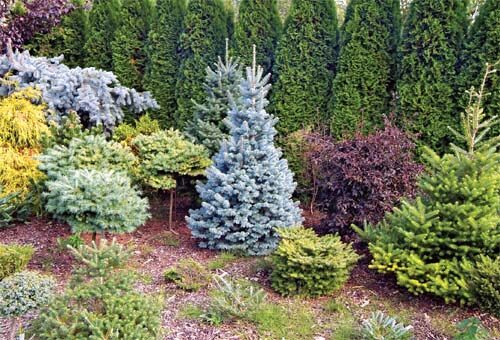
Description of fir trees
Fir tree is an evergreen plant belonging to the large family of pine trees. The tree is widespread in various latitudes: in temperate, subtropical, and tropical regions. The natural habitat of this coniferous tree is the territory of Eastern and Central Europe, Eastern and Central Asia, some regions of North America, and North Africa.
Fir tree is a very decorative plant that retains the color of its needles even in winter. This tree stands out from the general mass of coniferous trees – its cones grow vertically upwards and resemble beautiful and original candles.
Fir tree is an evergreen plant that can reach various heights. Of the 50 species of firs, both low-growing plants and true giants can be found. Very tall trees grow only in the wild. For use in landscape design, small-sized fir tree varieties are predominantly chosen. The needles of firs are leathery, flat, and soft (only a few species have stiff and prickly needles), dark green on top, grooved; below – whitish. It contains about 14% resin, which can later be used to obtain turpentine and rosin.
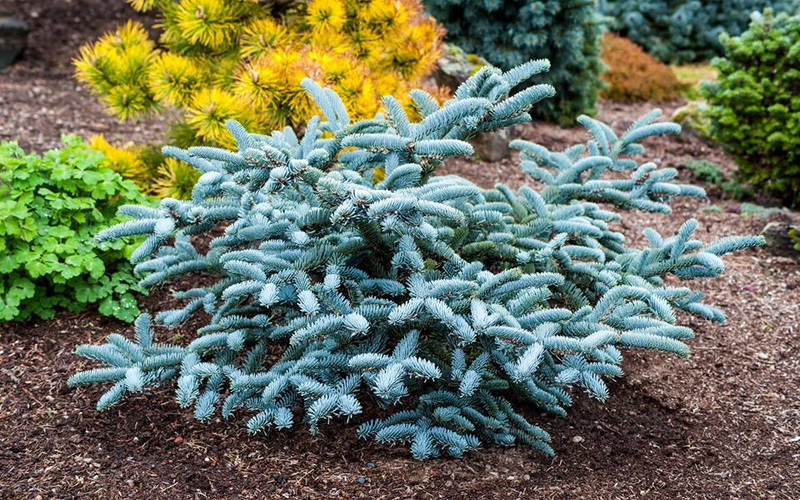
Description of Fir Trees
Fir trees are evergreen plants that belong to the large family of Pinaceae. The tree is widespread in various latitudes: in temperate, subtropical, and tropical regions. The natural habitat of this coniferous tree is Eastern and Central Europe, Eastern and Central Asia, and in some regions of North America and North Africa.
Fir is a very decorative plant that does not lose the color of its needles even in winter. The tree stands out from the total mass of conifers – its cones grow vertically upward and resemble beautiful and original candles.
Fir trees possess extensive root systems with long, deep-reaching roots. Their root structure is characterized as taproot. Young fir trees typically feature a thin, smooth grayish bark covering the trunk, which gradually thickens and develops cracks as the tree ages. A distinguishing characteristic of fir trees, setting them apart from other conifers, is the crown that starts from the very bottom, almost touching the ground. The crown exhibits a conical shape.
Fir trees produce both male and female flowers. Male flowers manifest as clusters of cones, whereas female flowers develop into egg-shaped or cylindrical cones that grow vertically upward.
Fir Tree Varieties
Balsam Fir Nana
Balsam Fir Nana is a dwarf form with a round crown. The branches are sprawling, dense, and grow horizontally. Shade-tolerant. The growth rate is slow. The winter hardiness is high. It prefers moist loams. In dry periods, additional watering and rain are required. It is affected by spruce-fir Hermes. Used in single and group plantings. Recommended for planting in rocky, heather, and small gardens, in rock gardens, for cultivation in containers, greening of roofs, and decorating slopes.
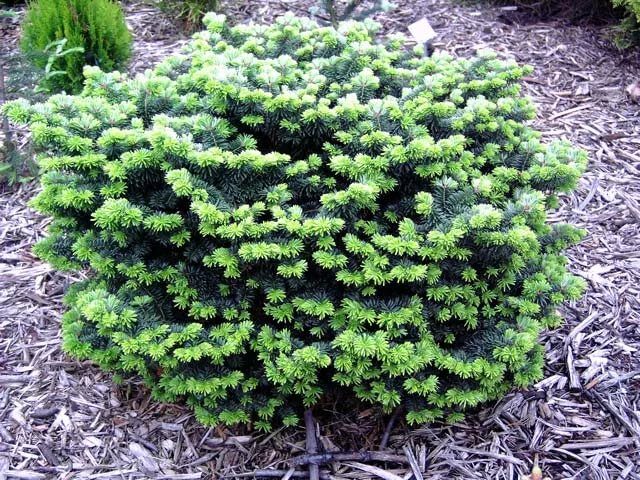
Korean Fir
The Korean Fir stands out for its impeccable form and vibrant purple cones. It has a slow growth rate, typically reaching a maximum height of 4-5 meters. Thriving in fertile and well-drained soils, it particularly enjoys abundant sunlight, although it can tolerate partial shade. However, it is not tolerant of drought and requires regular moisture. On a positive note, it exhibits frost resistance, enabling it to withstand colder temperatures.
The Korean Fir, with its captivating beauty, is often selected as a Christmas tree. It comes highly recommended for both individual plantings and group arrangements, as it adds a touch of charm to any landscape.

Korean Fir “Molly”
The Korean Fir “Molly” has a lush conical crown and is particularly decorative with its bright purple cones. Its growth rate is slow. It can grow in any soil, but prefers fertile, slightly acidic, and well-drained soil. It prefers bright and wind-protected areas. Its winter hardiness is average, and it is susceptible to the spruce-fir hermes moth. It is also prone to sunburn in early spring. It is used for both individual and group plantings in urban park areas, gardens, and as a live Christmas tree in small gardens.

Norway Spruce
The Norway Spruce is one of the most beautiful trees in terms of its shape and color. The tree’s crown is very dense, wide, and conical. This plant exhibits excellent resistance to wind and can thrive in urban conditions. Additionally, it is winter hardy, ensuring its survival through harsh winters. It thrives best in cool planting locations with partial shading, and it has a preference for fertile soil. Its versatility allows for both group plantings and individual placements, making it a versatile choice for various landscaping projects.
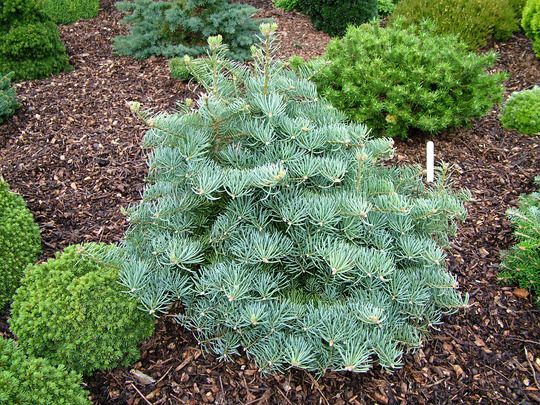
Colorado Spruce
The Colorado Spruce is a large tree in its natural habitat. The plant is shade-tolerant, and young specimens prefer to be in the shade, especially during midday. Colorado Spruce is not demanding in terms of soil, it grows well in moderately nutritious and moist garden soils. It has good winter hardiness. Colorado Spruce can be planted in formal and forested areas of a garden, individually on a lawn, or included in a freely growing hedge on large plots.
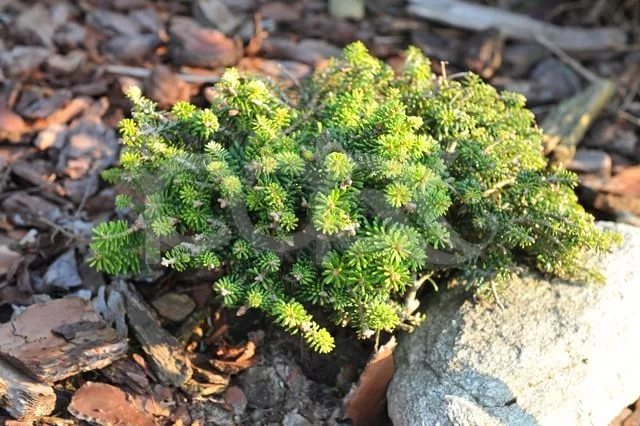
Nordmann Fir
The Nordmann Fir is a tree with grayish-brown, age-cracking bark. The twigs are light brown, hairy, but quickly become bald. The buds are not resinous. The needles are dark green, shiny, with whitish stripes on the underside, two-parted at the top, comb-like on the older part of the branch, and flat on the tips. The cones are cylindrical, reddish-brown with projecting covering scales. The wild form is often sold as a “Christmas tree.”

Dwarf Korean Fir “Brilliant”
The Dwarf Korean Fir “Brilliant” is a compact cultivar derived from the Korean Fir. It has a cushion-shaped crown, and its needles are dense, dark green, and soft to the touch, with rolled edges. The cones are vertical and display a violet-brown coloration. To highlight its beauty, it is recommended to plant it as a standalone tree or in combination with other dwarf plant varieties.
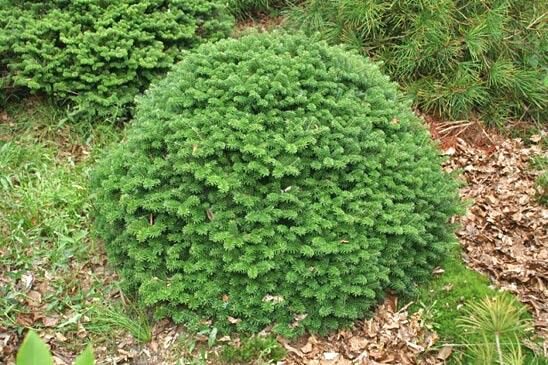
Fraser Fir
The Fraser Fir is a tree with a conical or columnar crown. The Korean Fir features short needles that are rounded or notched at the tips. These needles are twisted at the top of the branches, giving them an interesting appearance. They are dark green in color and have a glossy texture. The cones of the Korean Fir are cylindrical and rounded in shape. Immature cones exhibit a purple hue with yellowish covering scales, while mature cones turn purple-brown.
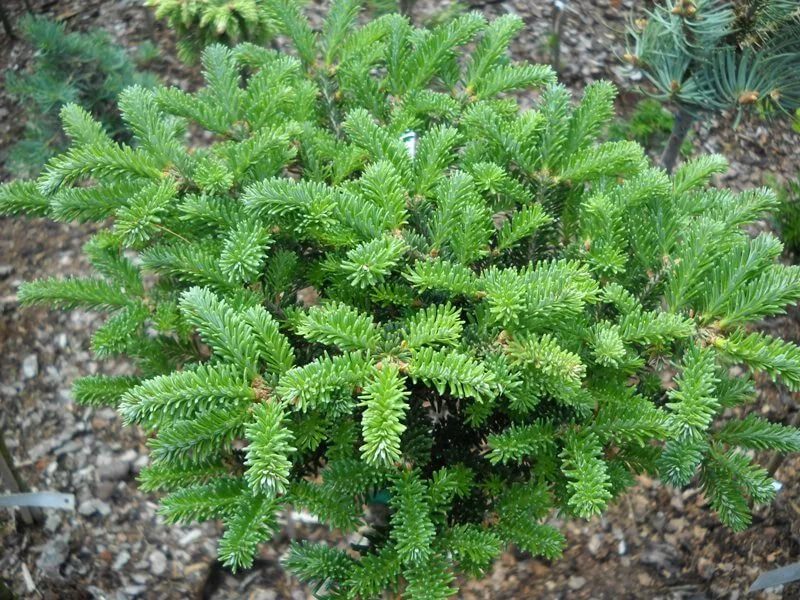
Subalpine Fir
The Subalpine Fir has a narrow conical crown and is low-growing in the high mountain zone. The bark is gray, smooth, or slightly fissured. The needles are bluish-green and matte on top, with two white stripes on the bottom, arranged irregularly in two rows and persist for 9 years. The cones are cylindrical, mature in August, and the seeds are cone-shaped with a shiny wing. The root system is shallow, and the tree is prone to wind damage. In nature, it can live for 250-300 years. It is used for both individual and group plantings.
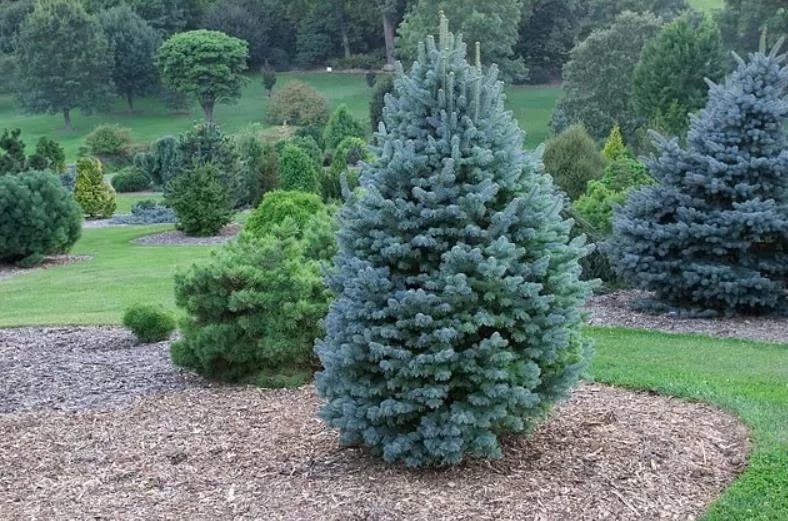
Compact, Dense Fir
This fir tree variety is a dwarf form characterized by a broadly conical crown. Its branches are sturdy, directed upward, and densely branched. The silvery-blue needles cover the shoots densely, displaying a sickle-shaped appearance with distinct white stomatal lines underneath. Propagation of this plant can be done through both seeds and cuttings.
Originally obtained in 1927 in Boskoop from seeds, this fir tree has gained significant popularity among gardening enthusiasts. It comes highly recommended for various purposes, such as rock gardens, container gardening, and adding aesthetic appeal to lawns.

Weeping Japanese Fir
Originating from Japan, this fir tree is renowned for its exceptional ornamental qualities. It stands tall, reaching heights of up to 40 meters, and features horizontally arranged branches that form a loose, pyramidal crown. The bark on the trunk remains smooth and whitish-gray, even in mature trees, while young branches showcase a gray or greenish hue with short hairs.
The needles of this fir tree are soft, noticeably curved, and glossy on the upper surface. They display a dark green color and distinct white stripes on the underside, creating a silvery-white appearance when the wind blows. As for the cones, they begin with a bluish-purple hue and eventually transition to brown.
This fir species is winter-hardy, exhibiting vigorous growth in its early stages. It boasts higher resistance to smoke and gases compared to other species. Adequate light and fertile soil are crucial for its optimal development. Its remarkable decorative qualities, particularly the unique coloration of its crown, make it deserving of special attention. Whether planted individually or in groupings, this fir tree, known for its beauty, is an excellent choice for creating captivating garden and park compositions.
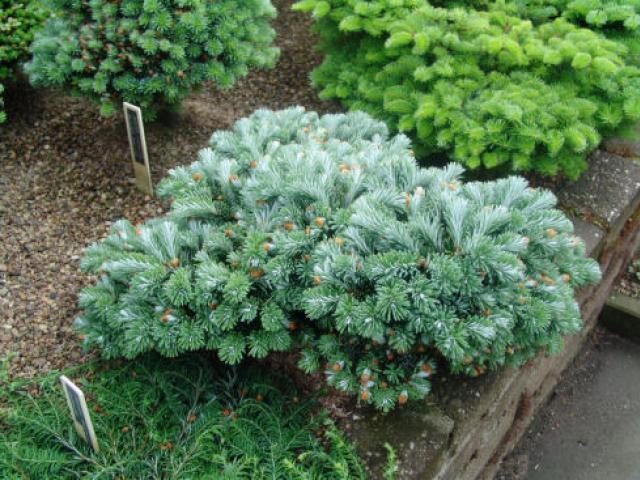
Planting Fir Trees
You can plant and transplant fir trees during spring, specifically in April, as well as in autumn, from the end of August until September. Most fir tree species thrive in moist, well-drained soils that are rich in nutrients and have deep clay composition. The ideal planting material is typically 5-7 years old. It is recommended to carry out the planting process on warm, cloudy days or, even better, during periods of rainfall. It is advisable to prepare the planting site at least two weeks in advance of the actual planting.
Dig holes 60-80 cm deep and wide enough to accommodate the root system. Loosen the bottom of the hole to a depth of 10-15 cm and fill it halfway with a nutrient mixture consisting of clay soil, leaf soil or manure, peat, and river sand (2:3:1:1). Then add 10 kg of sawdust, 200-300 g of nitroammophos, and mix again. Pile it up, sprinkle with garden soil (without fertilizers) on top, plant the tree by laying the roots horizontally, and fill the hole with garden soil. Place the fir sapling so that the root collar is level with the ground.
Young fir trees need regular soil cultivation with simultaneous weeding and subsequent mulching of the stem circle with sawdust, chips, or peat.
Balsam fir, surrounded by young growth, requires the largest area.

Care for fir trees
Fir trees are not very demanding plants, but care is necessary for obtaining a beautiful and decorative coniferous tree. Fir trees are moisture-loving plants, but over-watering should be avoided. The optimal watering regime is once every 2 weeks for young seedlings, and it is best to use a watering method like rain. Once the tree has taken root, watering is only necessary during the driest periods.
To care for fir trees, it is important to regularly loosen the soil around the base of the tree. Take care to carefully loosen the soil and remove any weeds. For young seedlings, periodically adding a layer of dry mulch around the base of the tree is recommended. This helps prevent excessive moisture evaporation and the formation of soil crust. Suitable mulch options include dry sawdust, peat, or tree bark. However, it is essential to ensure that the mulch does not cover the root collar of the tree.
Fir trees thrive in fertile and nutrient-rich soils. Fertilization is typically necessary two years after planting. It is advisable to fertilize at least once a year, with the option to repeat the process in the fall. Mineral fertilizers are commonly used for this purpose.
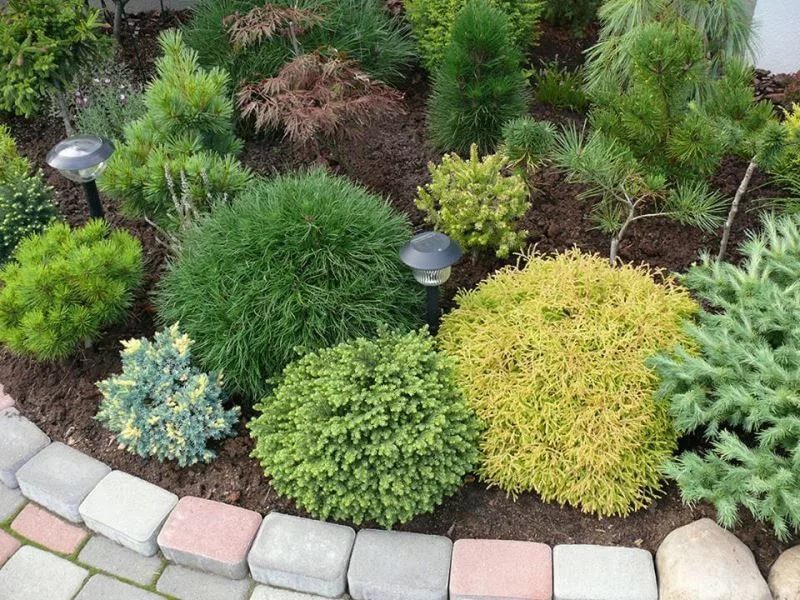
Pruning and winter protection of spruce
Spruce trees do not like being disturbed by transplanting and pruning. However, you can perform sanitary pruning in the spring before the sap starts to move. During this pruning, carefully remove damaged and dry branches with garden shears. Spruce trees have a beautiful and compact crown that practically does not need shaping, especially in the first 10 years. However, if necessary, in the spring you can trim the shoots by no more than a third.
Advantages of spruce in landscape design
These plants can withstand any weather conditions, be it frost, heat, prolonged rain, or drought, once they are established in a new location.
Coniferous compositions exhibit resistance to various diseases and, in fact, create a unique microclimate that can help reduce the presence of insects. The emission of phytoncides by coniferous plants acts as a preventive measure against the development of viruses and bacteria.
Within the confined area of a suburban house, the climate becomes milder, and the air is enriched with oxygen. Additionally, the presence of trees helps reduce the number of dust particles in the air while acting as a natural barrier against noise and wind
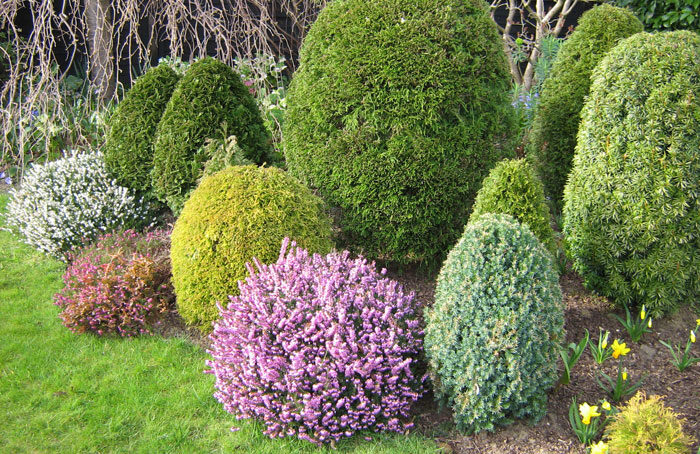


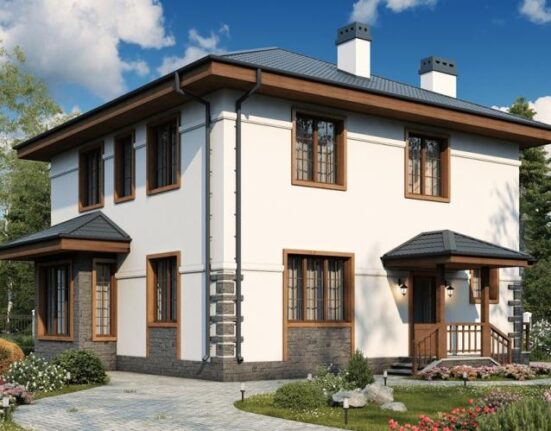

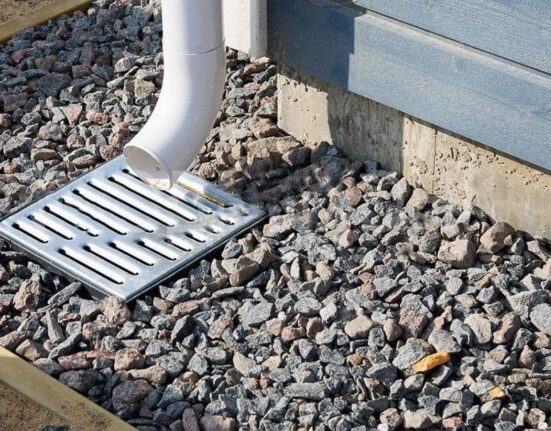
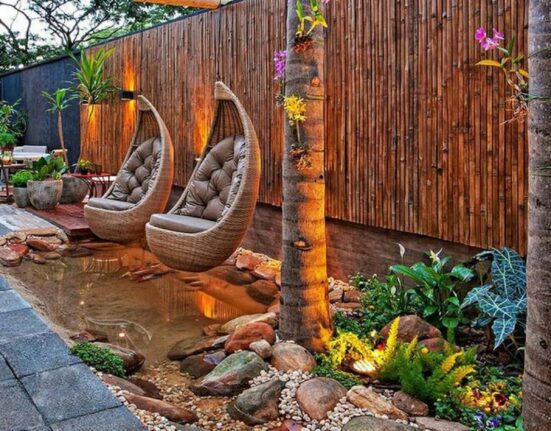
Leave feedback about this